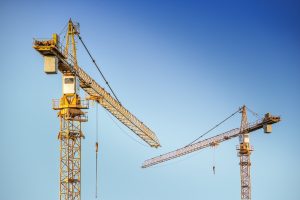Key Takeaways
- Understand the many benefits of asphalt in modern construction.
- Discover how asphalt contributes to sustainability and cost-effectiveness.
- Learn about the latest innovations in asphalt technology.
Introduction to Asphalt in Construction
Asphalt has entrenched itself as an indispensable material within the construction industry, celebrated for its versatility and formidable resilience. Serving as a foundation for development in both urban and rural environments, asphalt lays the path from expansive interstate highways to quiet neighborhood roads. For project managers and urban developers, securing a reliable asphalt supplier ensures that construction standards are met with excellence and longevity.
Asphalt’s historical roots run deep, tracing back to ancient civilizations, where it was first used as a binding agent. Fast-forward centuries and asphalt’s evolution mirrors industry advancements, blending tradition with innovation as it forms a cornerstone of modern infrastructure.
Benefits of Using Asphalt
One of asphalt’s most significant advantages is its esteemed durability. This material’s commendable capacity to endure harsh weather conditions—from the dry, simmering heat of summer to icy winter chills—speaks volumes about its reliability. Streets, highways, and airport runways are often subjected to relentless wear and tear. Yet, asphalt stands strong through relentless traffic and climatic challenges, reducing the need for frequent reparations and extensive maintenance.
Economically, asphalt is unparalleled. Its initial investment proves more favorable when juxtaposed with other construction materials, often resulting in substantial savings. However, the benefits extend beyond cost: the rapid installation capability of asphalt minimizes project downtime, enabling quicker completions without sacrificing the structural integrity that stakeholders depend on.
Environmental Impact and Sustainability
In the contemporary age of environmental awareness, asphalt’s sustainable properties are gaining well-deserved attention. The material’s innate ability to be recycled offers significant ecological benefits. Studies suggest that over 99% of asphalt is reincorporated into new pavement projects. This recycling capability is crucial in conserving natural resources and diminishing the carbon footprint attributed to construction activities.
Environmental initiatives have also led to developing more sustainable asphalt production techniques. Warm-mix asphalt has emerged as a promising alternative, demanding less energy and cutting greenhouse gas emissions. Such innovations align industry practices with burgeoning ecological standards, promoting a harmonious balance between development and environmental stewardship.
Innovations in Asphalt Technology
As technology propels the industry forward, asphalt innovations have paved the way for remarkable advancements. New formulations incorporate additives that enhance the pavement’s resistance to rutting and weather-induced damage, extending the lifespan of asphalt surfaces. These advancements align with modern expectations for long-lasting and cost-efficient infrastructure.
Furthermore, the incorporation of innovative technologies into asphalt surfaces holds immense potential. Sensor-embedded “smart asphalt” has revolutionized road safety and maintenance, offering real-time data on traffic patterns, wear analytics, and environmental conditions. Such innovations bolster the efficiency of road systems, ensuring safer travel and well-maintained highways.
Asphalt in Urban Development
The role of asphalt in bustling metropolitan areas cannot be overstated. As a critical component of urban infrastructure, asphalt supports the intricate web of roadways, parking facilities, and pedestrian pathways that keep a city alive. Its flexible nature allows for customization according to the urban environment’s specific demands, whether a bustling commercial district or a tranquil residential neighborhood.
The future of city planning is indelibly linked to sustainable practices. Asphalt plays a pivotal role in this realm by offering resilient surfaces that withstand the pressures of urban life while supporting sustainable development goals. As we move toward an era of sustainable urban planning, asphalt remains a key player in crafting future-ready infrastructures.
Challenges and Considerations
Despite its strengths, asphalt presents challenges requiring thorough consideration. Regular maintenance is essential to address natural wear and tear. Proactive management and scheduled repairs can avert deterioration, significantly extending the pavement’s operational lifespan.
Effective project planning should account for drainage management, sub-base quality, and local environmental impacts. Addressing these early in development ensures that asphalt installations meet and exceed expected durability and performance benchmarks.
Conclusion
Asphalt continues to serve as a cornerstone of construction, offering remarkable advantages in durability, economic viability, and environmental responsibility. As we forge ahead, embracing innovative technologies and sustainable practices, asphalt remains poised to meet the evolving needs of our built environment. Through keen adaptation and continuous improvement, asphalt solidifies its role in laying the groundwork for sustainable, efficient, and long-lasting infrastructures that pave the way for progress.





